In the fast-paced world of tech, where global spending is predicted to hit a staggering $11.47 trillion by 2026, efficient return management is more crucial than ever. Return Merchandise Authorization (RMA) is at the heart of managing returns, repairs, and replacements, ensuring customer satisfaction while maintaining streamlined operations.
What is RMA?
RMA stands for Return Merchandise Authorization, a formal process used by manufacturers and retailers to manage product returns, repairs, or replacements. This system not only ensures that customers can return faulty or unwanted products but also plays a key role in managing inventory, reducing operational costs, and enhancing customer service.
In its simplest form, an RMA allows a customer to return a product to the manufacturer or retailer for a refund, replacement, or repair. However, the process itself involves far more than just issuing a return authorization; it includes careful documentation, logistical planning, and adherence to various compliance regulations, especially when managing international returns.
For manufacturers and original equipment manufacturers (OEMs), managing RMAs effectively is integral to ensuring customer satisfaction, optimizing supply chain operations, and minimizing financial and environmental impact.
Why is RMA Crucial in the Tech Industry?
The tech industry, particularly electronics and high-value gear, has one of the highest return rates among all sectors. It’s estimated that the return rates for tech products can range from 10% to 20%, largely due to product complexity, compatibility issues, or consumer expectations not being met. RMA processes are essential to manage these returns, and they help:
- Enhance Customer Satisfaction: A smooth RMA process fosters trust and loyalty.
- Maintain Product Quality: Ensures that faulty or damaged products are repaired or replaced swiftly.
- Optimize Reverse Logistics: Helps in managing returned products efficiently, minimizing costs and environmental impact.
Challenges in RMA Management and Supply Chain Implications
Managing RMAs presents multifaceted challenges that extend beyond logistics efficiency, encompassing sustainability, legal compliance, and operational resilience:
Geographic Spread and Logistics
International returns add another layer of complexity. Companies must navigate through diverse customs compliance regulations, different transit times, and varying costs, which can cause delays and impact customer satisfaction. This also extends to reverse logistics, where products need to be transported backward through the supply chain for repairs, refurbishments, or disposal.
Inventory and Operational Burden
The volume of returns can fluctuate unpredictably, straining warehouse capacity and inventory management systems. Efficient RMA processes require businesses to allocate resources flexibly, which is a significant challenge during high-return seasons or for high-value products.
Trade Compliance and Legal Hurdles
Managing RMA for global tech goods involves navigating numerous trade compliance issues. Mishandling of RMAs can lead to costly fines, penalties, and even damage to a company’s reputation. This is especially crucial for high-value and dual-use goods.
The Role of Dual-Use Technology in RMA
Dual-use technology products require additional compliance checks during the RMA process. These items are often subject to specific licensing requirements for both export and re-import. Therefore, when handling such returns, manufacturers must ensure that they comply with export control regulations, including:
- Proper Classification: Accurate classification of products under export control lists (e.g., Commerce Control List (CCL) in the US or EU Dual-Use List).
- End-User Screening: Ensuring that returned products are not being sent to restricted entities or individuals.
- Export/Import Licensing: Depending on the nature of the product and its destination, businesses may need export or import licenses for returned goods.
Optimizing RMA for Enhanced Supply Chain Performance
Return Merchandise Authorization is integral to managing product returns, safeguarding customer satisfaction, and fortifying supply chain resilience in the tech industry. By embracing specialized RMA solutions, manufacturers can mitigate risks, reduce costs, and foster long-term customer loyalty amidst global trade complexities and technological advancements.
For OEMs navigating the intricacies of RMA management and trade compliance, partnering with TecEx ensures seamless execution and compliance across international borders. This partnership not only safeguards operational excellence but also drives sustainable growth in the ever-evolving tech landscape.
Here’s how businesses can enhance their RMA operations:
/Return%20Merchandise%20Authorization%20(RMA).png)
Invest in Technology and Automation
Automation is the key to speeding up RMA processes, reducing human error, and improving overall efficiency. AI and machine learning are increasingly being used for predictive analytics, allowing businesses to anticipate returns and streamline reverse logistics.
Customer Self-Service
Offering a self-service RMA portal where customers can initiate returns, track their progress, and print return labels improves both customer satisfaction and internal processing efficiency.
Centralized RMA Systems
A centralized RMA system integrates with existing inventory management, CRM, and transport management platforms, allowing for seamless communication across all departments involved in the process.
Sustainability Practices
Focusing on sustainable practices, such as recycling or reselling returned goods, reduces waste and helps businesses meet their environmental goals.
The TecEx Advantage | Streamlining RMA Management
TecEx offers specialized RMA solutions that help businesses navigate the complexities of reverse logistics, especially for high-value and tech-related goods. By partnering with TecEx, companies benefit from:
Expert RMA Specialists
TecEx has dedicated specialists experienced in managing RMAs across international borders, ensuring compliance with both trade regulations and customs requirements.
Proactive Communication
Clear instructions, timelines, and proactive updates ensure a smooth RMA experience for customers, reducing delays and customer dissatisfaction.
Efficient Warranty Management
TecEx simplifies warranty management and fulfillment, even for businesses with global operations, ensuring that repaired or replaced goods are returned swiftly.
Sustainability
By supporting initiatives like electronic product recycling (EPR), TecEx helps businesses reduce their environmental footprint while enhancing supply chain sustainability.
RMA is no longer just a logistical necessity—it’s a crucial element of a company’s customer service, operational efficiency, and global trade compliance strategy. As the world of tech and ecommerce continues to grow and evolve, businesses must streamline their RMA processes to stay competitive, enhance customer satisfaction, and maintain compliance.
Our expertise in managing RMA projects, even in remote international locations, ensures streamlined returns processes that save time and reduce costs associated with compliance and logistical challenges.
Whether you’re handling high-value tech goods, dealing with dual-use technologies, or navigating complex trade compliance issues, understanding and optimizing RMA is key to long-term success. TecEx’s EOR solution simplifies reverse logistics shipments, especially across global markets. Collaborating closely with clients, TecEx also delivers IOR and DDP solutions tailored to meet each business’s unique needs, reaffirming our commitment to operational excellence and customer satisfaction.
Looking for expert help to streamline your RMA operations? TecEx offers specialized solutions tailored to help businesses optimize their RMA processes, manage international returns, and stay compliant in a rapidly changing world. Partner with us to ensure your RMA management is as efficient and effective as possible.
/RMA.png)


